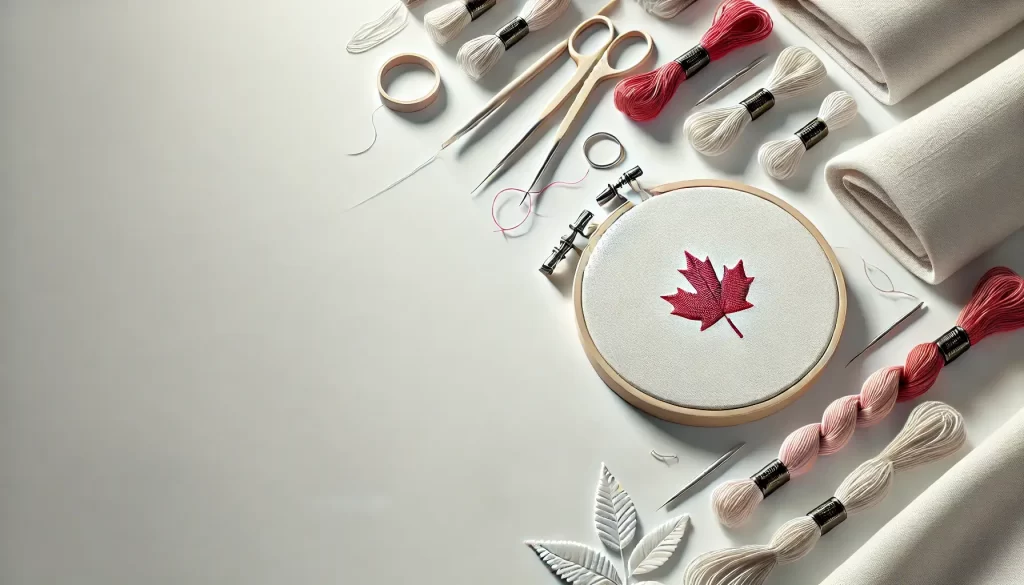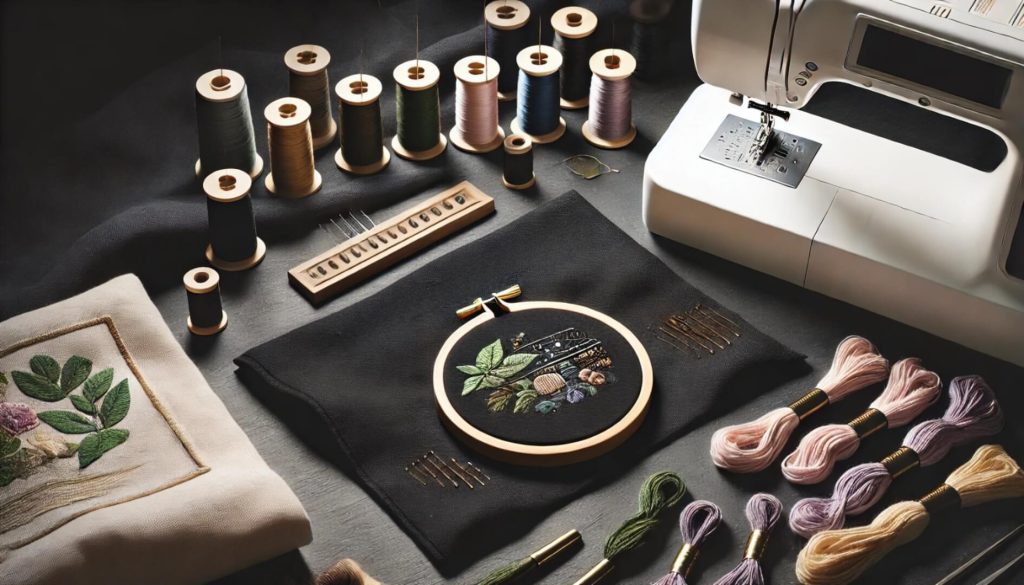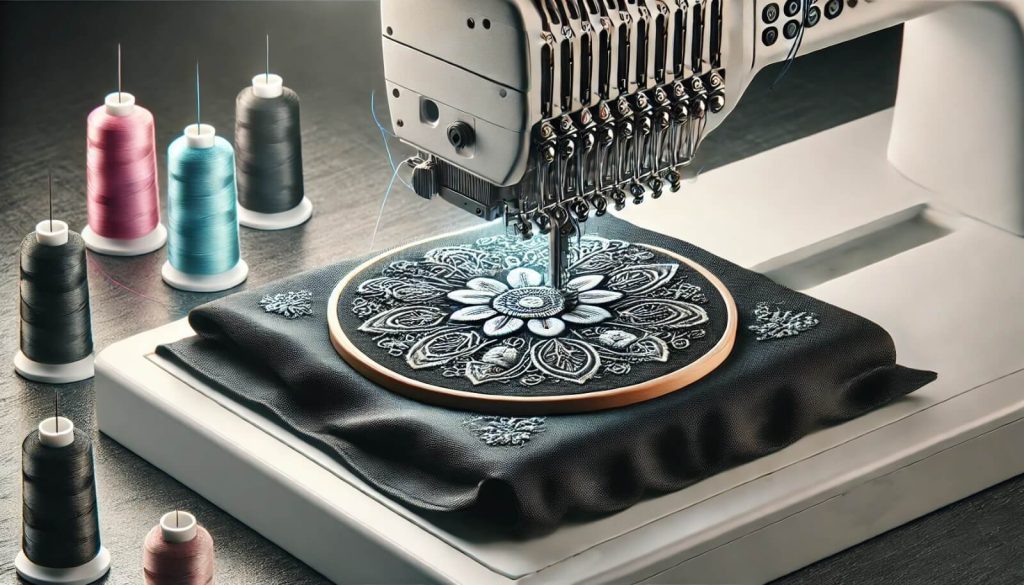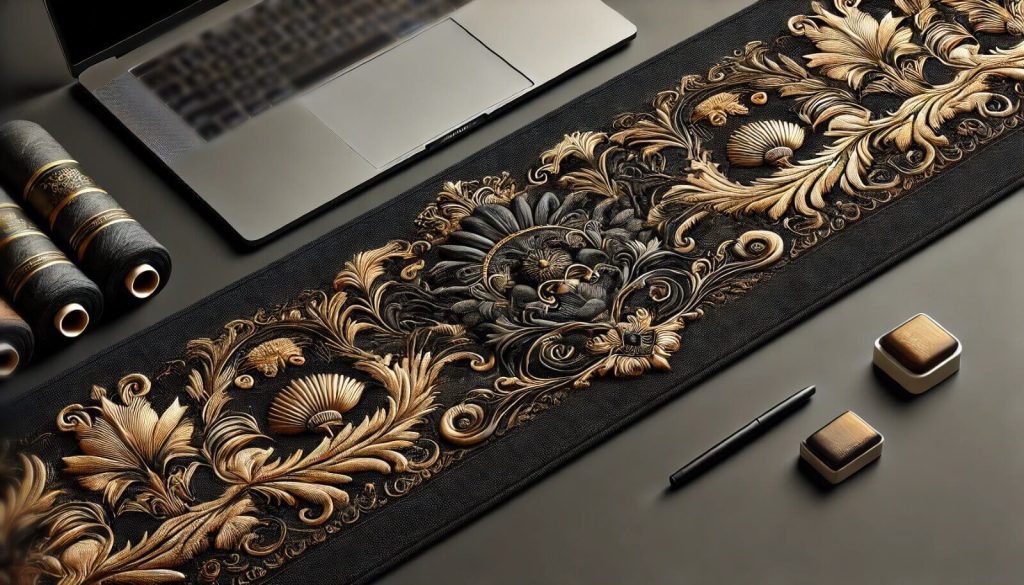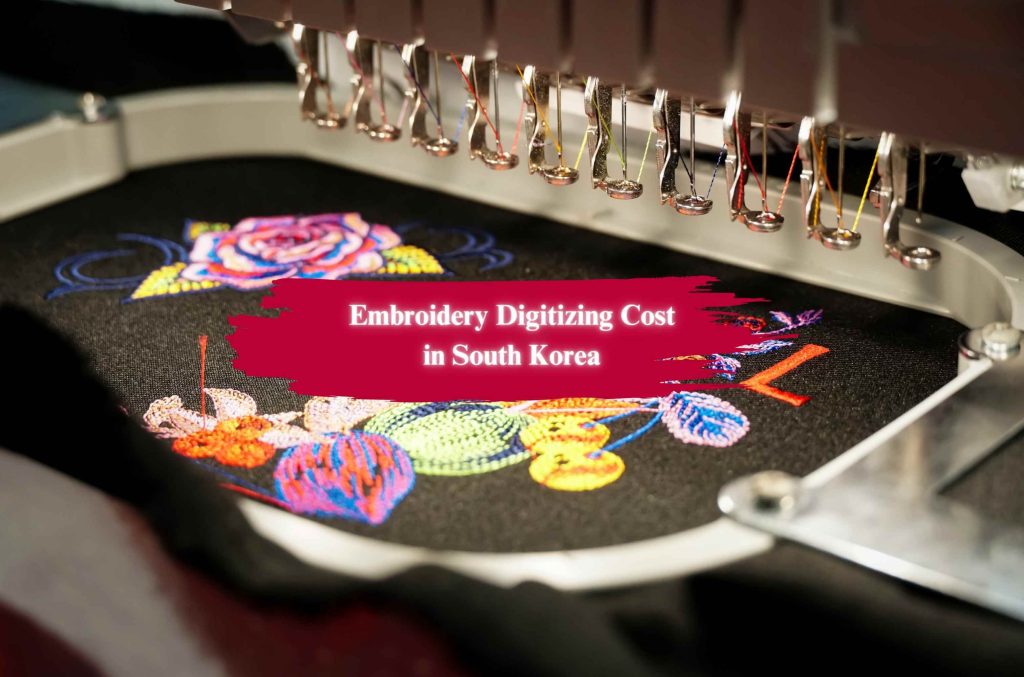Embroidery has long been a way to add unique, personalized touches to clothing, accessories, and other fabric items. Whether you’re looking to customize your company’s logo on a uniform or add a personal design to a hat or jacket, embroidery digitizing allows for high-quality, durable, and professional results.
However, in the modern embroidery world, achieving this level of precision & detail requires more than just needles and threads. This is where custom embroidery digitizing services come into play.
In this blog, we’ll take you through the basics of custom embroidery digitizing & explain how the process works. We’ll also study the various types of embroidery digitizing services available. We will also highlight why working with professional digitizers is crucial for achieving top-notch results.
Overview of Embroidery: Traditional vs. Modern Techniques
Historically, embroidery was a manual craft done by hand with needles and thread, this process was labor-intensive and time-consuming. While this traditional method still exists, modern embroidery techniques have advanced significantly thanks to technology. Today, machine embroidery is the most popular method used for creating custom designs, and this is where digitizing comes in.
In machine embroidery, digitizing involves converting your artwork into a format that an embroidery machine can understand. The custom digitizer uses specialized software to create a file that outlines exactly how the machine should stitch the design. This means adjusting stitch types, colors, and density, ensuring the embroidery looks crisp, clean, and professional.
Importance of Digitization
Digitization is key in modern embroidery because it ensures that designs can be replicated quickly and accurately. Without digitizing, it would be impossible for a machine to execute intricate designs such as logos, text, or detailed artwork. Custom embroidery digitizing enables businesses to produce large quantities of high-quality embroidery with perfect precision, ensuring brand consistency across all promotional products, uniforms, or personal items.
What is Custom Embroidery Digitizing??
Custom embroidery digitizing is the process of converting custom artwork or logos into a format that embroidery machines can understand & stitch onto fabric. This service has become essential for businesses and individuals needing custom designs to ensure high-quality, accurate, and detailed embroidery.
- Stitch Path: This is the path that the machine follows when stitching out the design.
- Thread Colors: The specific color of threads to be used for each part of the design.
- Stitch Types: Different stitches like satin, running, fill, etc, are used to create different textures.
Whether in the USA, UK, Australia, or Canada, reliable custom embroidery digitizing services can help turn your ideas into reality.
Why Custom Digitizing Is Essential
- Precision and Consistency: Custom embroidery digitizing ensures that your design looks the same across all products. Whether it’s a small batch of shirts or a large corporate order, digitizing ensures consistency in size, placement, and detail.
- Scalability: Once a design is digitized, it can be easily reproduced on multiple items, from shirts to hats, jackets, and bags.
- Design Integrity: Digitizing helps preserve the integrity of the design, ensuring that it looks exactly as intended.
The Embroidery Digitizing Process: Step-by-Step
1. Receiving the Design
The first step in the digitizing process is receiving the artwork or design that needs to be embroidered. Designs can be submitted in a variety of file formats:
- JPG
- PNG
- AI
- PSD
For best results, vector-based designs such as AI or EPS files are preferred, as they maintain high resolution when scaled. High-resolution files are essential for ensuring the detail and sharpness of the design are preserved in the final product.
2. Converting the Image into Stitches
Once the design is received, the digitizer uses digitizing software (e.g., Wilcom, Hatch, TrueDesign) to convert the image into stitch data. This software breaks down the image into a series of small stitch commands that tell the machine exactly how to replicate the design.
- Manual vs. Automatic Digitizing: While some software can automatically convert designs into stitch paths, professional digitizers often prefer manual digitizing to ensure the highest level of quality and precision.
3. Choosing the Correct Stitch Types
There are several types of stitches used in embroidery, each serving a different purpose:
- Satin Stitches: Used for borders and details, providing a smooth and clean finish.
- Fill Stitches: Used to fill in large areas, providing texture.
- Running Stitches: Often used for fine lines or simple outlines.
- Cross Stitches: Used in decorative elements or for creating shading effects.
Each stitch type is chosen based on the design’s needs and the fabric it will be stitched on.
4. Thread Color and Fabric Considerations
Thread color matching is critical in embroidery. The digitizer must ensure that the thread colors align with the design and match the desired aesthetic. Pantone colors are often used for consistency across different fabric types and production runs.
Different fabrics (cotton, polyester, leather) also require different approaches:
- Cotton tends to handle dense stitches well.
- Polyester might require lighter stitching to prevent puckering.
- Leather often requires adjustments to prevent tearing.
5. Adjustments for Size and Placement
Once the stitch types and thread colors are decided, the design is scaled to the appropriate size for the item. The digitizer ensures the design’s placement is ideal for the garment type (center chest for t-shirts, back placement for jackets).
6. Testing the Design on the Machine
Before production begins, it’s important to test the design on a sample piece of fabric. This test run helps identify any issues, such as thread breaks, uneven stitching, or puckering. The design is adjusted if needed to ensure a perfect result.
7. Final Output and Delivery
Once the design is perfected, it is saved in a format compatible with embroidery machines (e.g., DST, PES, EMB). The file is then sent to the production team or customer for use.
Key Components of Custom Embroidery Digitizing
1. Premium Embroidery Digitizing & Custom Patches
Custom patches are a popular application of embroidery, often used in branding or as collectible items. Custom patch digitizing services ensure that designs are precisely converted for patch production, maintaining high detail even in intricate logos or text.
2. Appliqué Embroidery Digitizing
Appliqué involves sewing a fabric onto a base material, creating texture and a unique look. The Appliqué digitizing services ensure the edges are clean and the fabric layers are properly placed.
3. Digitizing Photos for Embroidery
Converting photos into embroidery files can be challenging due to the detail and shading in images. A skilled digitizer knows how to simplify these elements while maintaining recognizability.
4. Embroidery Digitizing for Logos
Logos often require precise and consistent stitching, especially for corporate branding. Logos digitizing service providers ensure the logos look sharp and professional, whether used on t-shirts, caps, or bags.
5. Lettering Digitizing
Text can be difficult to embroider without losing clarity. Letter digitizing services adjust the stitch density and type to ensure that small fonts remain legible.
Why Choose Custom Embroidery Digitizing Services?
Precision and Detail
Professional digitizers use advanced software and techniques to ensure your design is stitched with the utmost precision. This ensures a high-quality finish and accurate reproduction of your design.
Customization and Flexibility
Whether you’re looking for a logo on a cap, a monogram on a shirt, or a custom patch for jackets, professional custom digitizing services offer the flexibility to adapt your design for any garment.
Efficiency and Scalability
Once a design is digitized, it can be used to produce large batches quickly and efficiently. This is particularly useful for businesses needing to customize multiple items or for large promotional campaigns.
Professional Expertise
Working with a custom digitizing embroidery design expert ensures that your designs are optimized for both the embroidery machine and the fabric you are using. Professionals know how to solve common embroidery challenges like thread breakage, puckering, and misalignment.
Common Challenges in Embroidery Digitizing and How to Overcome Them
- Poor Image Quality: Low-resolution images can result in blurry or pixelated designs. Always provide high-resolution files to ensure the best result.
- Overcomplicated Designs: Designs that are too detailed may be difficult to digitize and can affect stitch quality. Simplifying designs can help achieve better results.
- Fabric and Thread Compatibility: Different fabrics react differently to embroidery. For example, stretchy fabrics like spandex require special handling to prevent thread tension issues.
Popular Embroidery Digitizing Services in the USA, UK, Australia, and Canada
Whether you’re in the USA, UK, Australia, or Canada, several top-rated companies offer reliable custom embroidery digitizing services. One leading provider in the industry is Quality Designx, known for its attention to detail, quick turnaround times, and exceptional customer service. They offer a range of services, including color blending digitizing services, monogram digitizing services, and 3d puff embroidery services.
Choosing the Right Custom Embroidery Digitizing Service
When choosing a custom embroidery digitizing service, consider the following factors:
-
- Experience: Ensure the company has experience with the specific type of embroidery you need.
- Portfolio: Look at their embroidery digitizing portfolio to assess quality.
- Customer Support: Choose a company that offers good communication and support.
- Price: Ensure their embroidery digitizing pricing is something you can easily afford.
Final Thoughts
Custom embroidery digitizing is essential for turning your artwork into high-quality, machine-readable designs. By working with skilled embroidery digitizers near me, you can ensure your designs are accurately represented on any fabric. Whether you’re looking for custom digitizing services for a logo, patch, or photo, investing in professional services ensures precision, consistency, and top-notch results.
If you’re ready to bring your design ideas to life, reach out to Quality Designx, the leading custom embroidery digitizing provider for superior, reliable results.
FAQs
- What is Custom Embroidery Digitizing?
Custom embroidery digitizing is the process of converting artwork, logos, or designs into a digital file. This file contains instructions for stitching, thread colors, and stitch paths, ensuring precise and consistent results.
- Why Do I Need Custom Embroidery Digitizing Services?
Custom embroidery digitizing ensures that your design is correctly formatted for machine embroidery, maintaining precision, detail, and quality. Whether for custom patches, logos, or text, professional digitizing services guarantee that your design is accurate across all items.
- What Formats Are Used in Custom Embroidery Digitizing?
Common file formats used for embroidery digitizing include DST, PES, EMB, and EXP. These formats are compatible with various embroidery machines, ensuring smooth production.
- How Much Does Custom Embroidery Digitizing Cost?
The cost of custom embroidery digitizing depends on the complexity of the design, the number of colors, and the size of the project. Prices may range from $10 to $150 per design or more, depending on these factors.
- Can I Digitize My Logo for Embroidery?
Yes! Custom logo digitizing is one of the most common types of embroidery digitizing services.
- How Long Does It Take to Digitize a Design?
Depending on the complexity of the design, it can take anywhere from a few hours to a couple of days. Simpler logos or text may be digitized faster, while detailed artwork or photos may take longer.
- Can Custom Embroidery Digitizing Services Handle Small Lettering?
Yes, small lettering digitizing is a specialized service that involves adjusting stitch density and size to ensure the text remains clear and legible, even when the font is tiny.
- Where Can I Find Custom Embroidery Digitizing Near Me?
If you are looking for embroidery digitizers, Quality Designx is the best provider in the USA, UK, Canada, and Australia.
Learn More About



